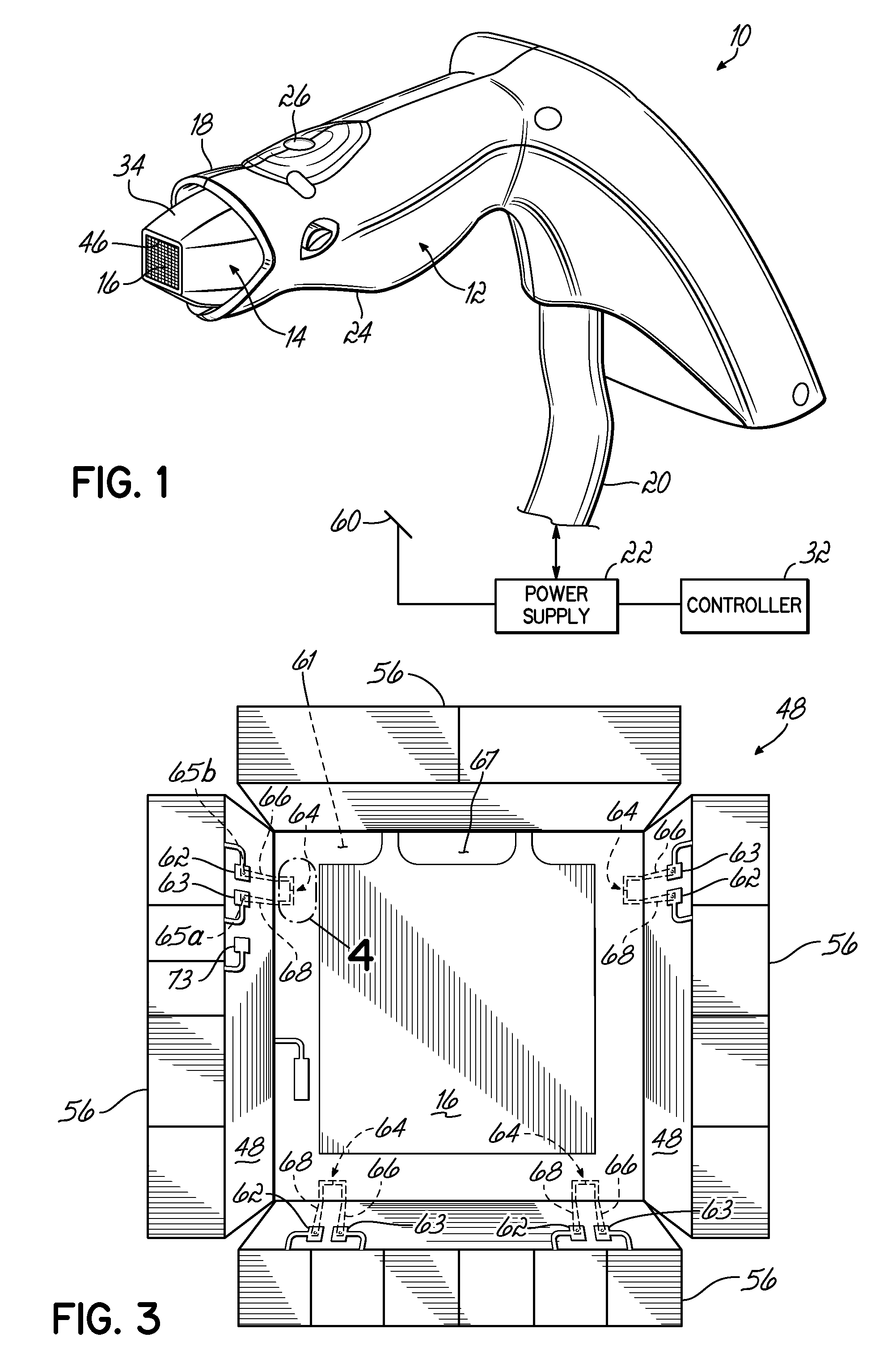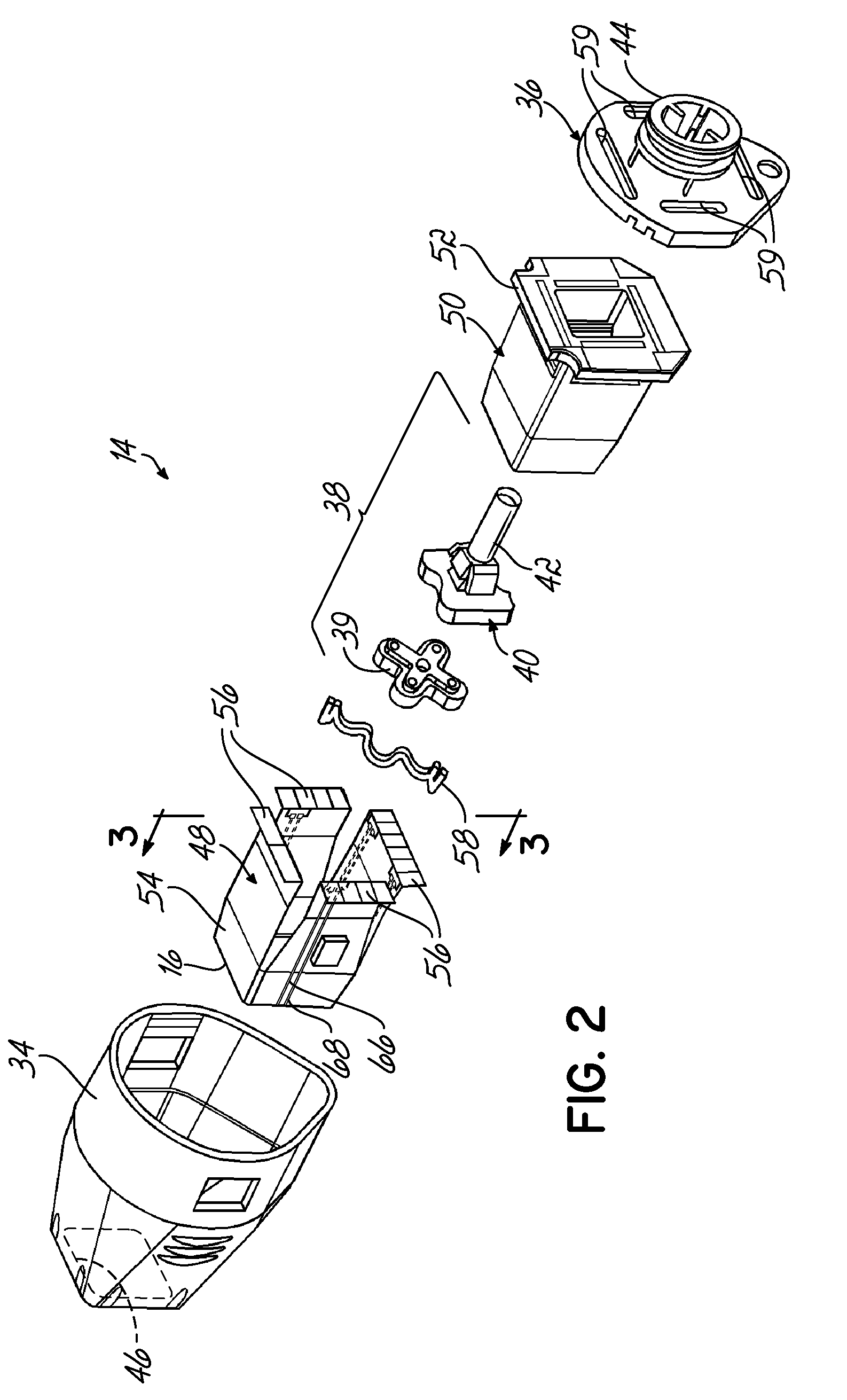Temperature sensing apparatus and methods for treatment devices used to deliver high frequency energy to tissue
a technology of high frequency energy and thermal sensing, which is applied in the direction of prosthesis, instruments, therapy, etc., can solve the problems of slow thermal response of the thermistor, the temperature readings of the thermistor may not reflect the actual temperature of adjacent structures, and the contraction of the tissue and tissue tightening, so as to improve the thermal sensing effect and reduce the impa
- Summary
- Abstract
- Description
- Claims
- Application Information
AI Technical Summary
Benefits of technology
Problems solved by technology
Method used
Image
Examples
Embodiment Construction
[0041]With reference to FIG. 1, a treatment apparatus or handpiece 10 includes a housing 12 typically composed of a plastic or polymer material, such as a cured polymer resin, that is molded, such as by an injection molding process, into a three-dimensional shape. Releasably coupled with the housing 12 is a delivery device in the representative form of an electrode structure or assembly 14 (i.e., treatment tip) having a leading end carrying an electrode 16, which protrudes from a shroud 18 defined at one end of the housing 12. When the electrode assembly 14 is coupled mechanically with the housing 12, the electrode 16 is exposed and visible.
[0042]Housing 12 provides a suitable interface for connection to an electrical connecting cable 20 that includes insulated and shielded conductors or wires (not shown) that electrically couple the electrode assembly 14 with a high frequency electromagnetic generator or power supply 22. Electrical connections (discussed below) inside a hollow inte...
PUM
 Login to View More
Login to View More Abstract
Description
Claims
Application Information
 Login to View More
Login to View More - R&D
- Intellectual Property
- Life Sciences
- Materials
- Tech Scout
- Unparalleled Data Quality
- Higher Quality Content
- 60% Fewer Hallucinations
Browse by: Latest US Patents, China's latest patents, Technical Efficacy Thesaurus, Application Domain, Technology Topic, Popular Technical Reports.
© 2025 PatSnap. All rights reserved.Legal|Privacy policy|Modern Slavery Act Transparency Statement|Sitemap|About US| Contact US: help@patsnap.com



